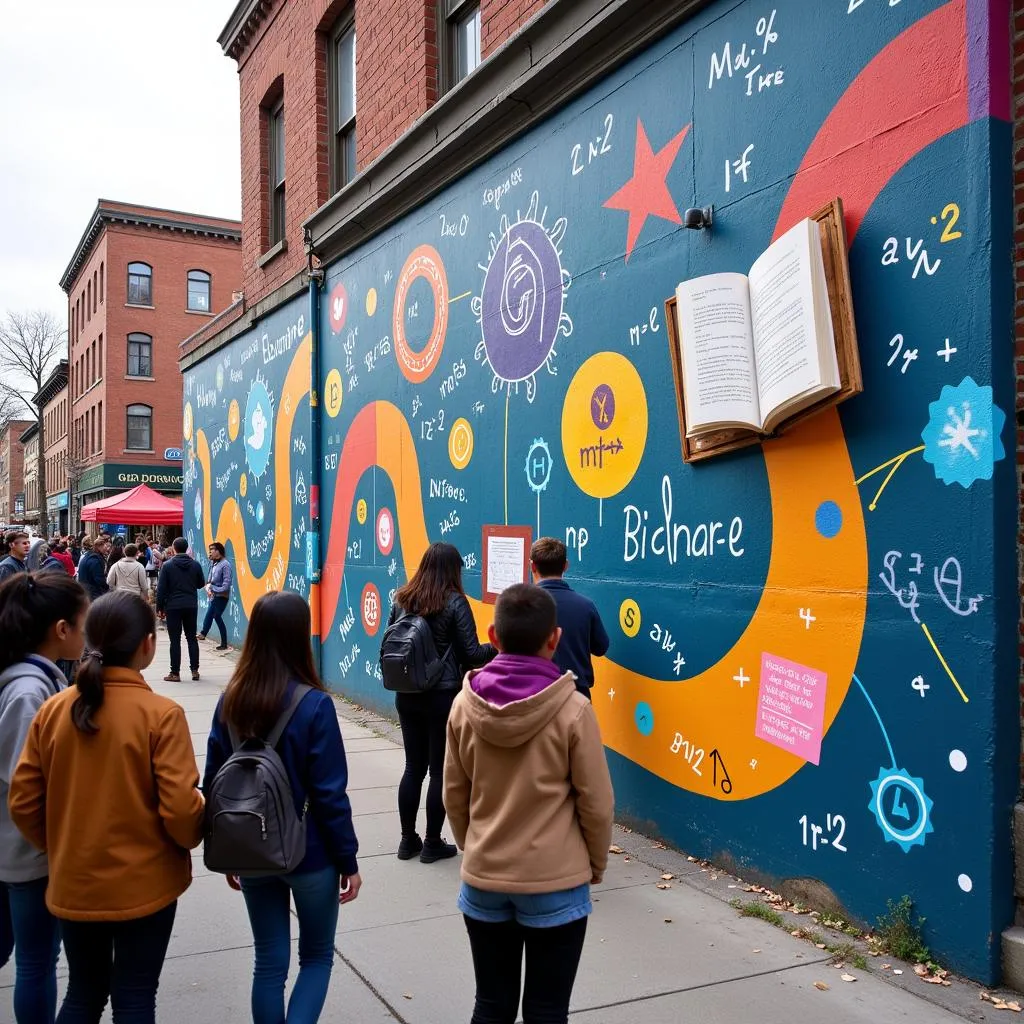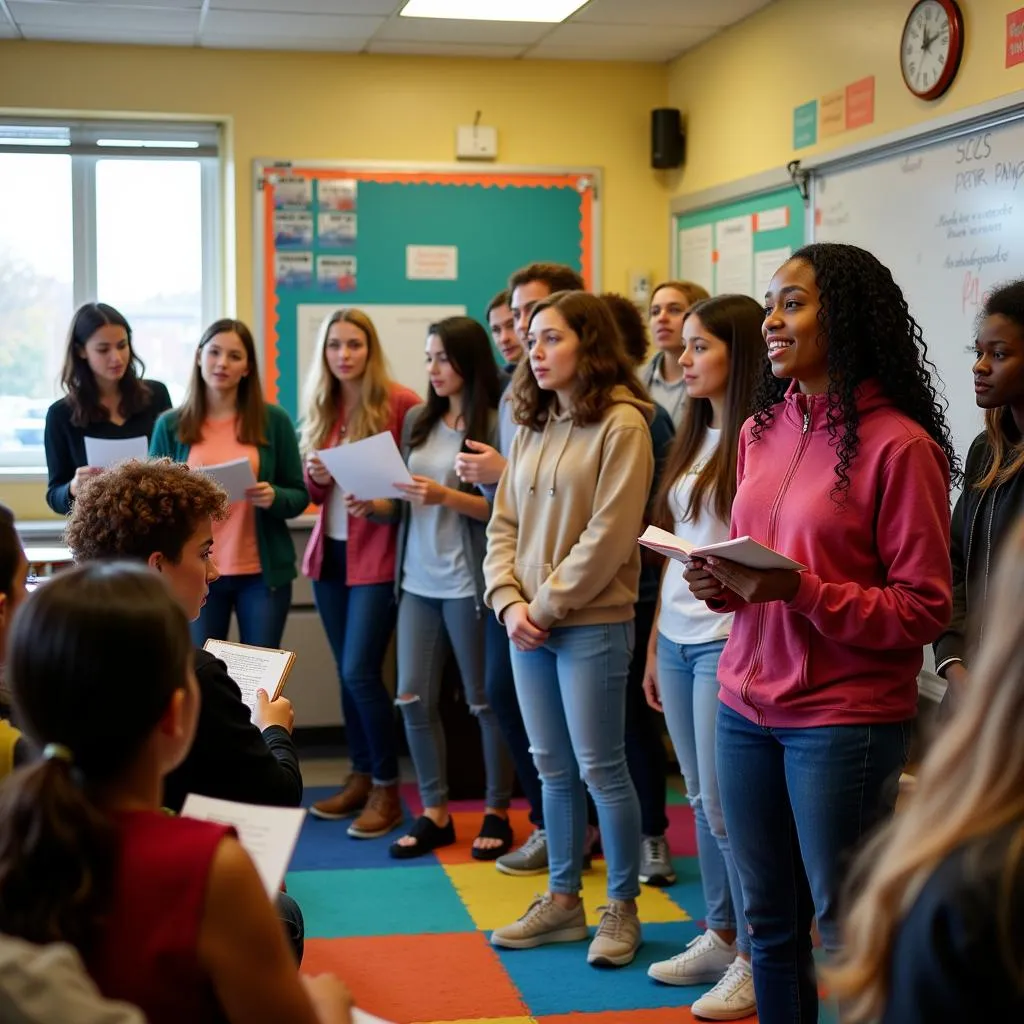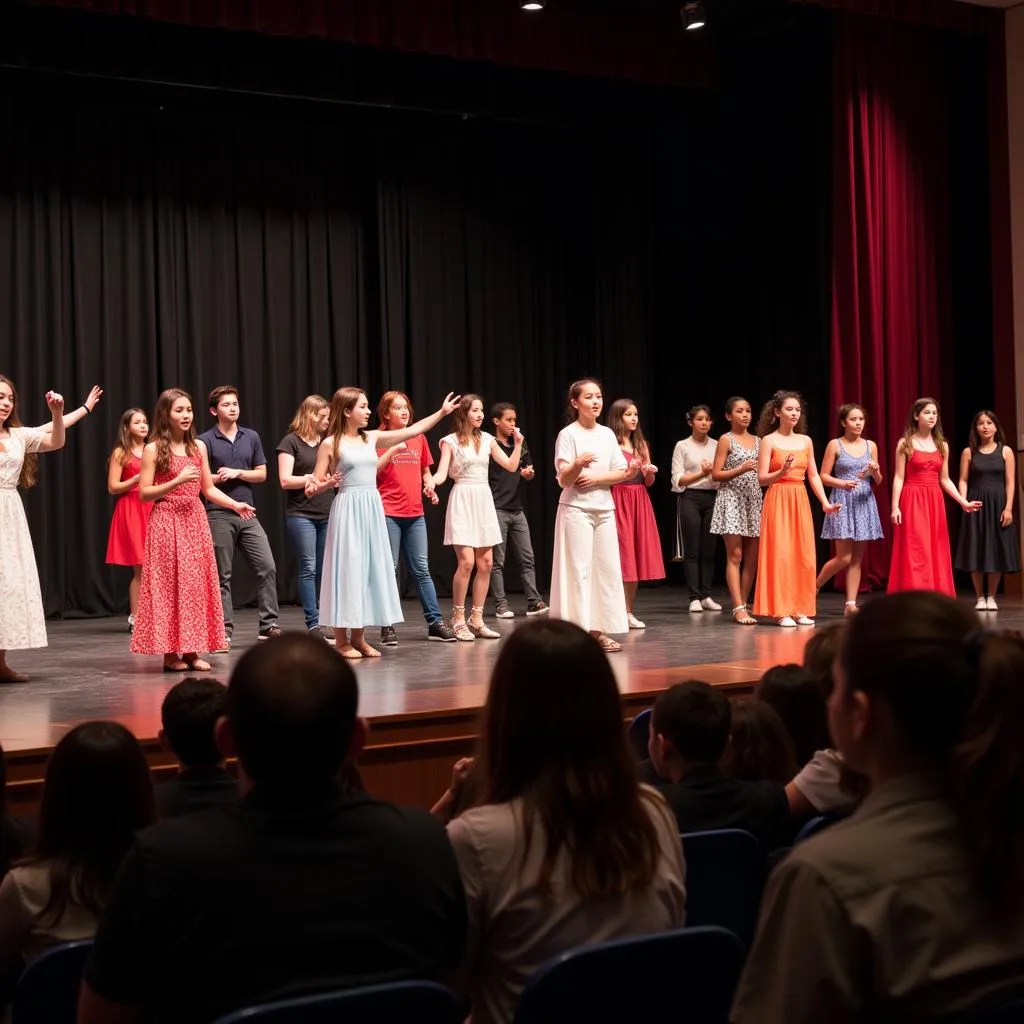Conflict resolution is a crucial skill in today’s interconnected world. One innovative approach to teaching this skill is through the use of theater. This IELTS Reading practice test explores how drama can be an effective tool in fostering understanding and promoting peaceful conflict resolution.
Nội dung bài viết
The role of international organizations in promoting cultural education has been significant in recent years, with many recognizing the power of the arts in bridging cultural divides. Let’s dive into a comprehensive IELTS Reading test that examines the use of theater in teaching conflict resolution.
Passage 1 – Easy Text
Theater has long been recognized as a powerful medium for exploring human emotions and social issues. In recent years, educators and conflict resolution specialists have begun to harness the transformative potential of drama to teach important skills in managing disputes and fostering understanding between diverse groups.
One successful program that exemplifies this approach is the “Drama for Peace” initiative, launched in 2010 by the International Theater Institute. This program brings together young people from conflict-ridden regions to participate in theater workshops and performances that address themes of reconciliation and mutual understanding.
Participants in the “Drama for Peace” program engage in a variety of activities designed to build empathy and communication skills. These include role-playing exercises, where students are asked to portray characters from different sides of a conflict, and improvisation sessions that challenge them to find creative solutions to complex social problems.
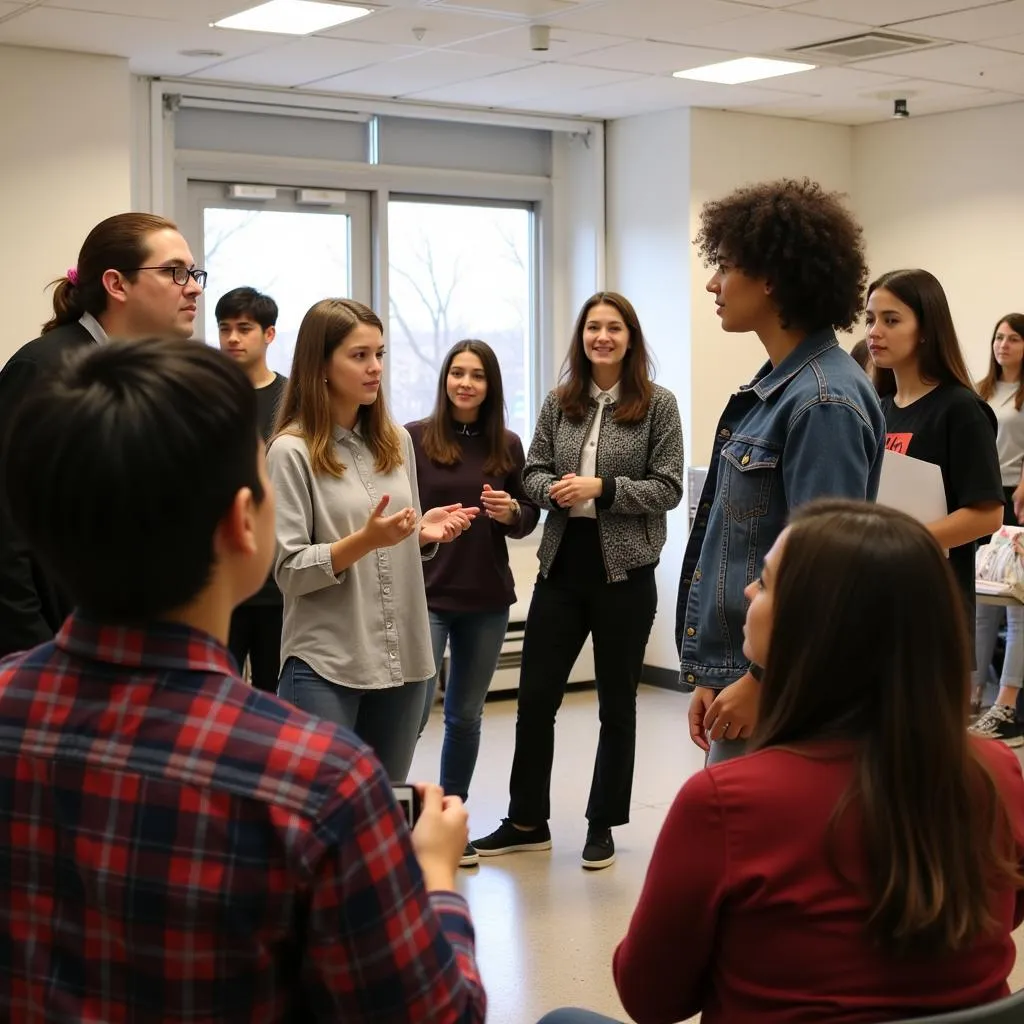 Youth participating in a Drama for Peace workshop
Youth participating in a Drama for Peace workshop
The impact of this program has been remarkable. A study conducted by the University of Manchester found that 85% of participants reported increased empathy for those on the opposite side of their conflict, while 78% said they felt more confident in their ability to resolve disputes peacefully.
Questions 1-5
Do the following statements agree with the information given in the passage? Write
TRUE if the statement agrees with the information
FALSE if the statement contradicts the information
NOT GIVEN if there is no information on this
- Theater has only recently been used as a tool for exploring social issues.
- The “Drama for Peace” initiative was started by the International Theater Institute in 2010.
- Participants in the program come exclusively from war-torn countries.
- Role-playing exercises are one of the activities used in the program.
- The University of Manchester study found that all participants reported increased empathy.
Questions 6-10
Complete the sentences below. Choose NO MORE THAN TWO WORDS from the passage for each answer.
- The “Drama for Peace” program uses theater workshops to address themes of __ and mutual understanding.
- Improvisation sessions challenge participants to find __ __ to complex social problems.
- According to the study, 78% of participants felt more __ in their ability to resolve conflicts peacefully.
- The program’s impact has been described as __.
- The use of drama in conflict resolution harnesses the __ __ of theater.
Passage 2 – Medium Text
The application of theater techniques in conflict resolution extends beyond youth programs to professional settings and international diplomacy. Interactive Theater for Justice (ITJ), a non-profit organization based in New York, has pioneered the use of forum theater in corporate environments and government agencies to address issues of workplace conflict and discrimination.
Forum theater, developed by Brazilian theater practitioner Augusto Boal, involves audience members stepping onto the stage to replace actors and propose alternative solutions to the conflicts presented. This participatory approach allows for the exploration of multiple perspectives and encourages creative problem-solving.
ITJ’s workshops typically begin with professional actors presenting a scenario depicting a workplace conflict. Audience members are then invited to intervene, taking on the roles of characters to enact alternative resolutions. A trained facilitator guides the process, encouraging reflection and discussion on the effectiveness of different approaches.
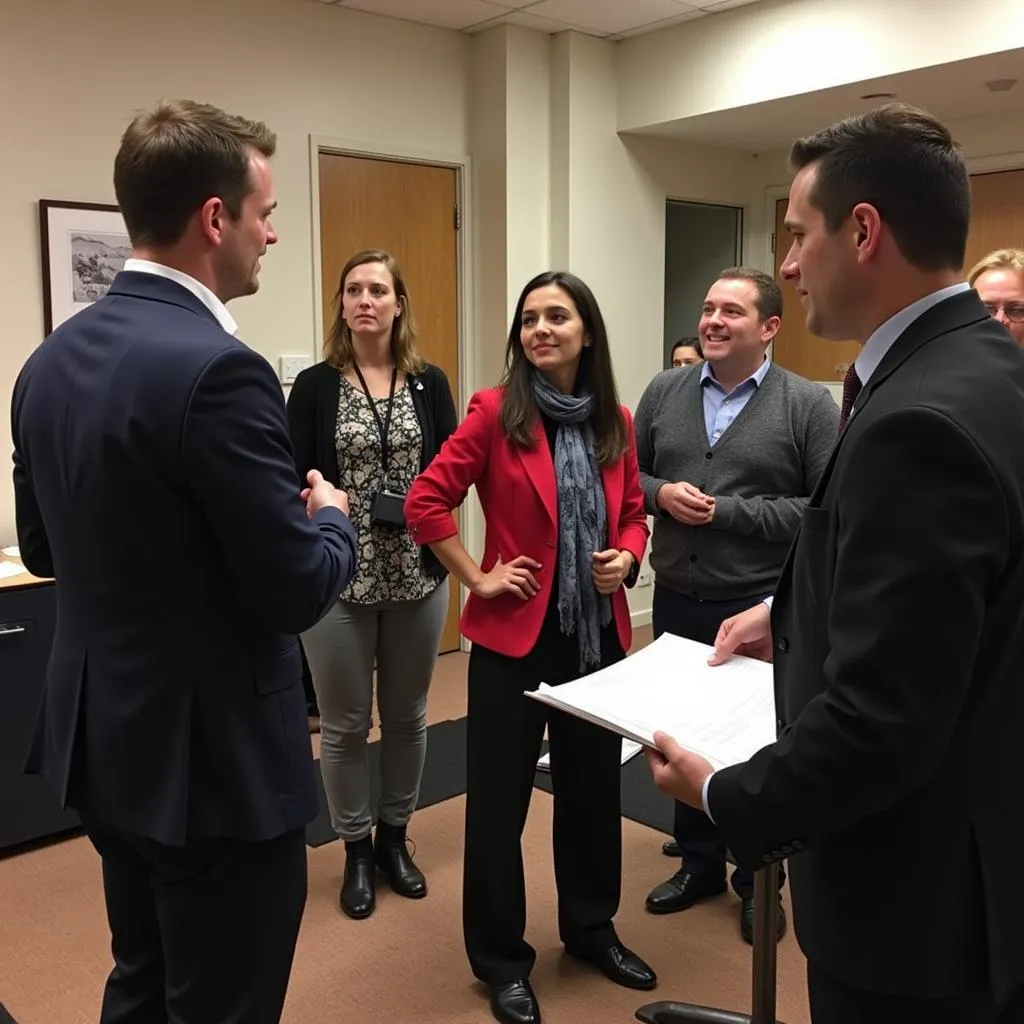 Participants engaging in a forum theater exercise during an ITJ workshop
Participants engaging in a forum theater exercise during an ITJ workshop
The impact of this method has been substantiated by several studies. A 2018 report by the Harvard Negotiation Project found that employees who participated in ITJ workshops showed a 40% improvement in their ability to de-escalate conflicts and a 35% increase in empathy towards colleagues from different backgrounds.
Moreover, the United Nations has recognized the potential of theater in international peacebuilding efforts. The UN’s Theater for Reconciliation program has been implemented in post-conflict zones such as Rwanda and Bosnia, using local stories and traditions to create performances that facilitate dialogue between formerly antagonistic groups.
Questions 11-15
Choose the correct letter, A, B, C, or D.
- Interactive Theater for Justice (ITJ) primarily uses theater techniques in:
A) Schools and universities
B) Corporate and government settings
C) Community centers
D) International diplomatic meetings - Forum theater was developed by:
A) Interactive Theater for Justice
B) The United Nations
C) Augusto Boal
D) The Harvard Negotiation Project - In ITJ workshops, audience members are encouraged to:
A) Write new scripts
B) Direct the actors
C) Replace actors and propose new solutions
D) Critique the actors’ performances - According to the Harvard Negotiation Project study, participants in ITJ workshops showed:
A) A 40% improvement in conflict de-escalation
B) A 35% improvement in conflict de-escalation
C) A 40% increase in empathy
D) A 75% overall improvement in workplace relations - The UN’s Theater for Reconciliation program:
A) Is only implemented in African countries
B) Uses professional actors from New York
C) Focuses on Western theatrical traditions
D) Incorporates local stories and traditions
Questions 16-20
Complete the summary below. Choose NO MORE THAN TWO WORDS from the passage for each answer.
Interactive Theater for Justice (ITJ) uses a technique called (16) __ __ to address workplace conflicts. This method, developed by a (17) __ theater practitioner, involves audience participation. In ITJ workshops, (18) __ __ first present a conflict scenario. Then, audience members can (19) __ to propose alternative solutions. This approach has been shown to improve participants’ ability to (20) __ __ and increase empathy in the workplace.
Passage 3 – Hard Text
The efficacy of theater in conflict resolution extends beyond its immediate impact on participants, influencing broader societal attitudes and policy-making processes. This multifaceted approach to peacebuilding through artistic expression has garnered attention from conflict theorists and practitioners alike, prompting a reevaluation of traditional conflict resolution methodologies.
One of the most salient aspects of theater-based conflict resolution is its ability to engage with the emotional and psychological dimensions of conflict, areas often neglected in conventional negotiation and mediation processes. By providing a safe space for the exploration of contentious issues, theater allows participants to confront and process deep-seated fears, prejudices, and traumas that may be at the root of conflict.
The Transcultural Conflict and Violence Initiative (TCVI), a research project at Georgetown University, has been at the forefront of studying the intersection of performance arts and conflict transformation. Their findings suggest that theater interventions can lead to measurable shifts in attitude and behavior among participants, even in protracted conflicts where traditional diplomatic efforts have failed.
One case study highlighted by TCVI involves a theater project in the disputed region of Kashmir. The project brought together young people from different sides of the conflict to create a collaborative performance based on their personal experiences. Researchers observed that through the process of sharing stories and embodying each other’s perspectives, participants developed a more nuanced understanding of the conflict and reported increased willingness to engage in dialogue with those they previously viewed as enemies.
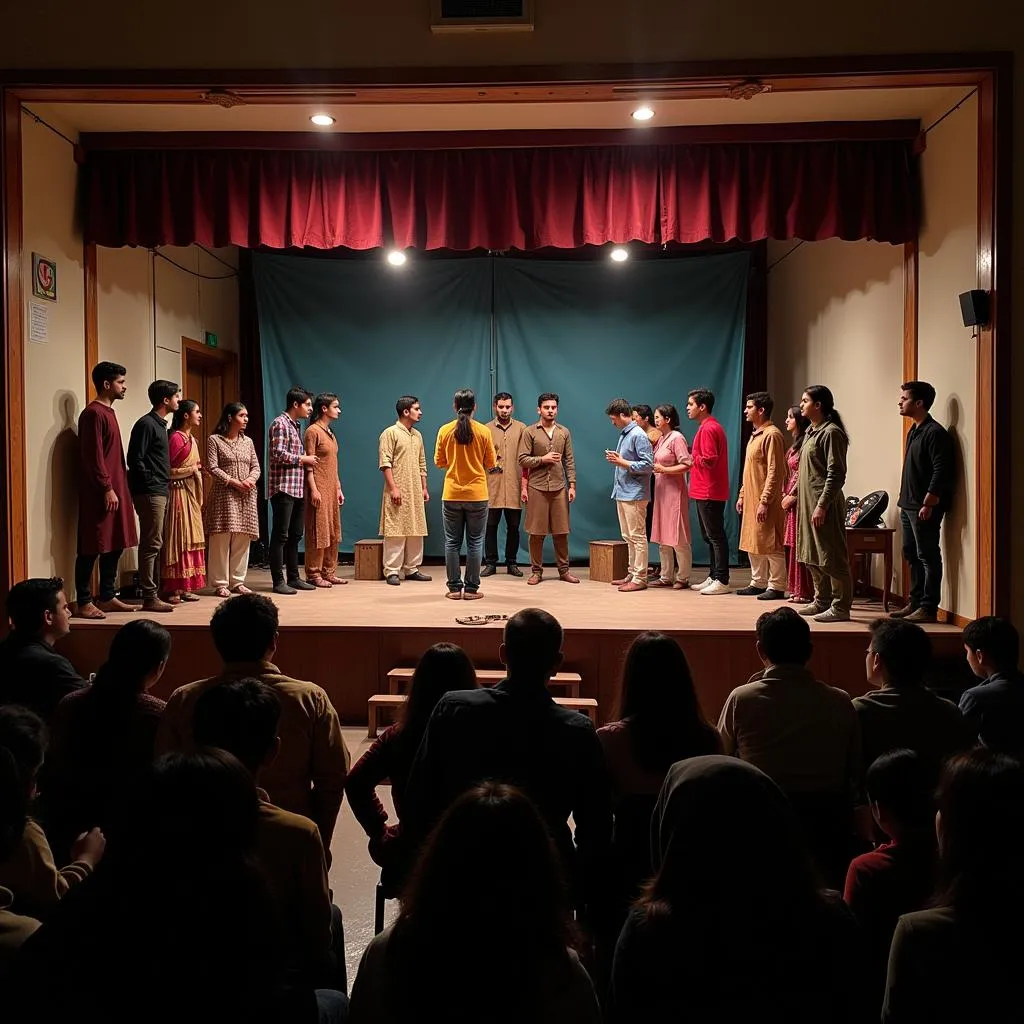 Young people from different sides of the Kashmir conflict performing a collaborative piece
Young people from different sides of the Kashmir conflict performing a collaborative piece
However, critics argue that the impact of such initiatives may be limited to those directly involved and question the scalability of theater-based approaches to conflict resolution. They contend that while powerful on an individual level, these methods may struggle to influence broader political and social structures that perpetuate conflict.
Proponents counter that the ripple effects of theater interventions should not be underestimated. They point to examples where community-based performances have sparked wider public discourse and even influenced policy decisions. In Northern Ireland, for instance, a series of plays addressing the legacy of the Troubles contributed to discussions that ultimately shaped reconciliation policies.
As the field of conflict resolution continues to evolve, the integration of theater and other creative approaches is likely to play an increasingly significant role. The challenge lies in developing robust methodologies for measuring and scaling the impact of these interventions, ensuring that the transformative power of theater can be harnessed effectively in diverse conflict settings.
Questions 21-26
Complete the sentences below. Choose NO MORE THAN TWO WORDS from the passage for each answer.
- Theater-based conflict resolution addresses the __ and psychological aspects of conflicts, which are often overlooked in traditional methods.
- The Transcultural Conflict and Violence Initiative is a __ __ at Georgetown University.
- In Kashmir, a theater project brought together young people to create a __ __ based on their experiences.
- Critics question the __ of theater-based approaches to conflict resolution.
- Proponents argue that community-based performances can have __ __ beyond the immediate participants.
- The challenge in this field is to develop __ __ for measuring the impact of theater interventions.
Questions 27-30
Do the following statements agree with the claims of the writer in the passage? Write
YES if the statement agrees with the claims of the writer
NO if the statement contradicts the claims of the writer
NOT GIVEN if it is impossible to say what the writer thinks about this
- Theater-based conflict resolution is universally accepted as more effective than traditional methods.
- The Kashmir theater project resulted in participants being more open to dialogue with former adversaries.
- Theater interventions have been proven to resolve conflicts in all cases where they have been applied.
- The use of theater in conflict resolution is likely to become more prominent in the future.
Answer Key
Passage 1
- FALSE
- TRUE
- NOT GIVEN
- TRUE
- FALSE
- reconciliation
- creative solutions
- confident
- remarkable
- transformative potential
Passage 2
- B
- C
- C
- A
- D
- forum theater
- Brazilian
- professional actors
- intervene
- de-escalate conflicts
Passage 3
- emotional
- research project
- collaborative performance
- scalability
- ripple effects
- robust methodologies
- NOT GIVEN
- YES
- NO
- YES
This comprehensive IELTS Reading practice test on the use of theater in teaching conflict resolution showcases the power of creative approaches in addressing complex social issues. How technology is preserving cultural traditions is another fascinating area where innovation meets cultural preservation, much like how theater is being used to bridge divides and foster understanding.
By engaging with these passages and questions, you’ve not only practiced essential IELTS Reading skills but also gained insights into an innovative field that combines art and peacebuilding. Remember to apply critical thinking and careful analysis when approaching similar texts in your IELTS preparation and during the actual test.
